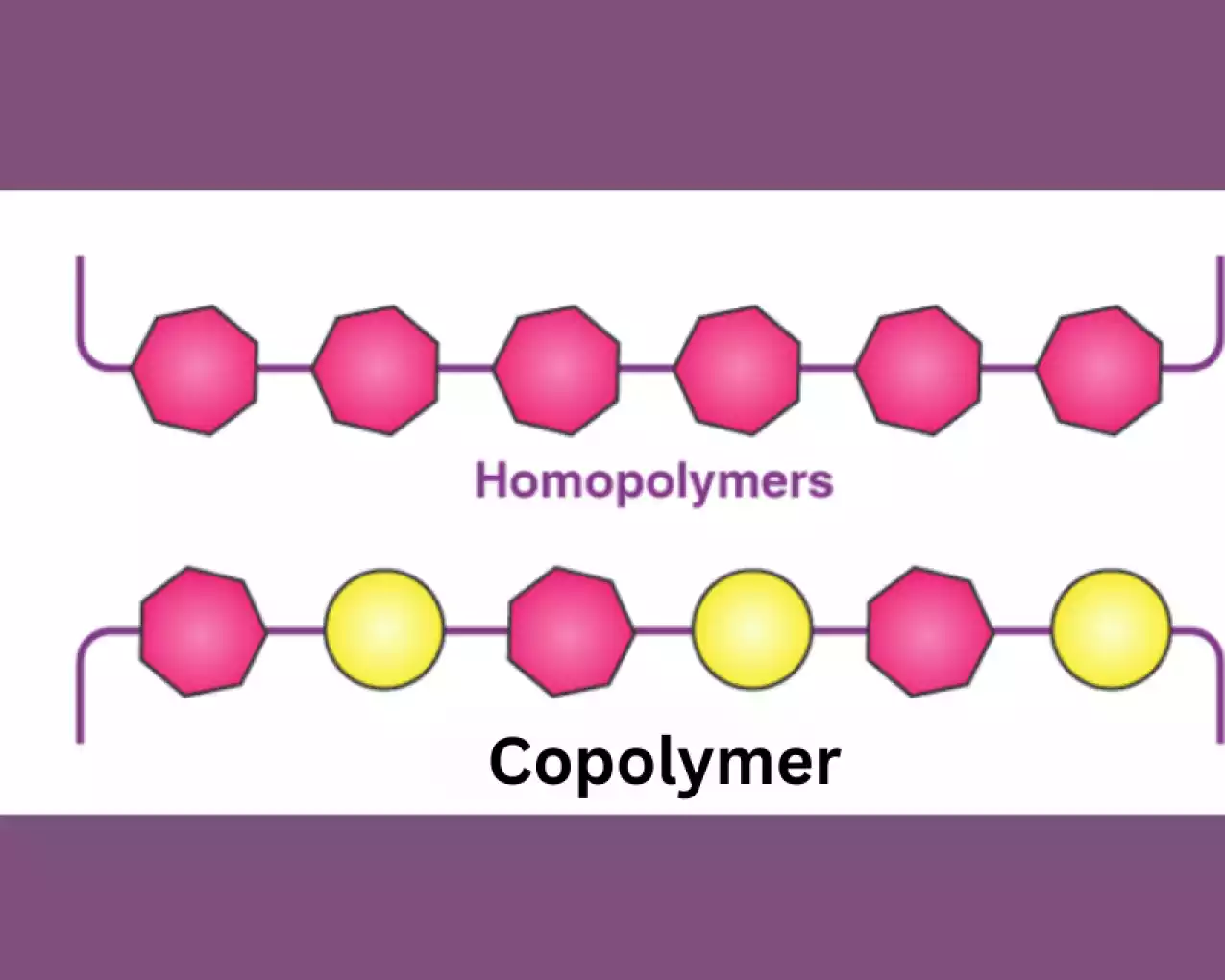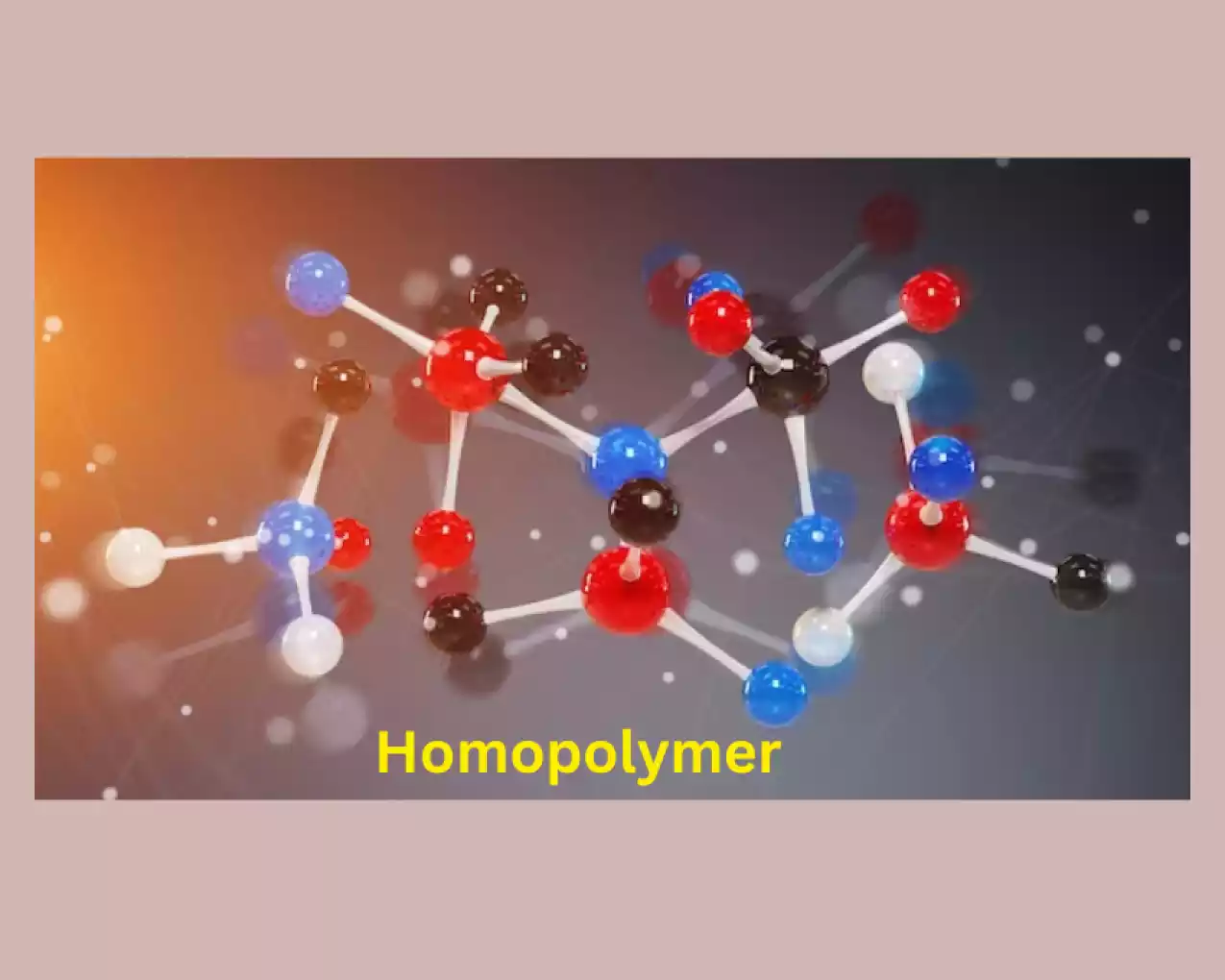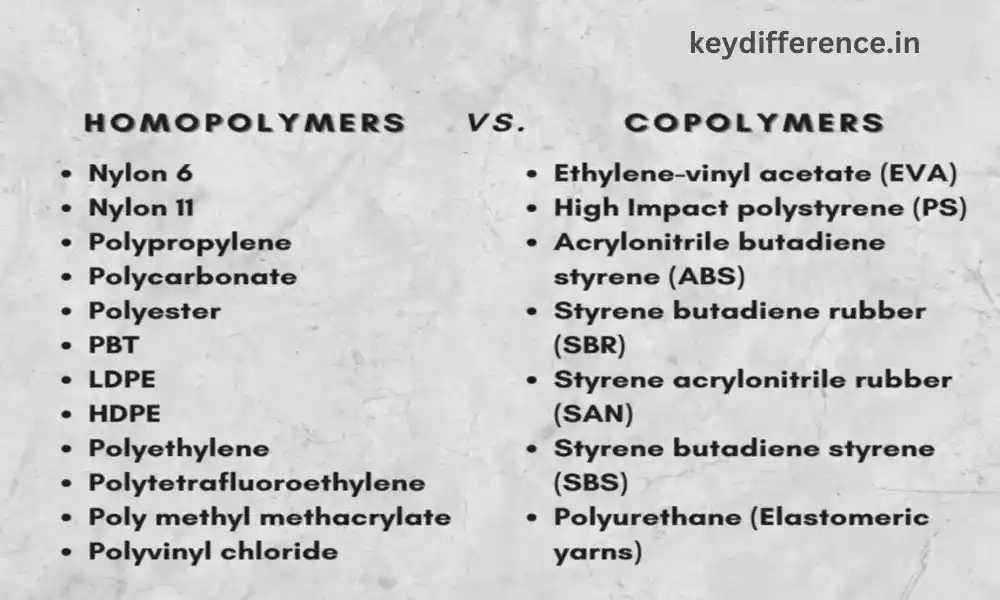Introduction of Copolymer and Homopolymer
Copolymer and Homopolymer are types of polymers composed of repeating units called monomers. Polymers have revolutionized many industries from consumer products to cutting-edge technological innovations. Composed of repeating units called monomers linked together via covalent bonds, polymers come in two basic varieties – copolymers and homopolymers.
Understanding the distinctions between copolymers and homopolymers is crucial for scientists, engineers, and manufacturers seeking to design materials with specific properties and applications. This content outline explores these distinctive materials – their distinctive properties, structural variations, and real-world applications as well as their distinctive roles within modern polymer science.
As part of this journey, we will begin by discussing copolymers and homopolymers in-depth, detailing their compositions and formation processes. Next, we will investigate structural differences and properties displayed by both types of polymers while emphasizing how different monomer arrangements lead to varied material characteristics. Copolymerization techniques also play a vital role in tailoring the properties and applications of these polymers.
We will demonstrate real-world applications of both copolymers and homopolymers, demonstrating their usefulness across industries from everyday items to high-tech innovations. By looking into current trends and future prospects we hope to gain insights into advancements that continue to shape polymer applications worldwide.
Overall, this content outline offers an in-depth exploration of copolymers and homopolymers, their differences, roles in shaping modern materials science, their significance for our daily lives, technological innovations, and much more. Let’s embark on this adventure into polymer chemistry’s expansive realm – with all of its diverse implications!
Definition of Copolymer
Copolymers are a type of polymer material composed of several different monomers chemically joined in a repeated fashion through copolymerization, in which multiple monomers interact to form chains-like structures.

Copolymers come in various varieties depending on how their monomer units are organized, creating different kinds of copolymers such as random, block, and graft copolymers. Random copolymers have monomer units distributed randomly throughout polymer chains while block copolymers arrange their units in long blocks or segments of one type followed by long blocks or segments of another type; and graft copolymers feature side chains of one monomer type grafted onto main chains of another type of monomer – random, block copolymers are all types of copolymers!
Copolymers offer a Versatile range of Properties that can be tailored specifically to their intended applications, making them useful across industries including automotive, packaging, electronics and medicine. Their ability to combine different monomers allows copolymers to showcase unique properties not found in homopolymers (polymers with one type of monomer unit). Copolymers play an integral part in developing advanced materials and have contributed substantially towards advances in polymer science and technology.
Definition of Homopolymer
Homopolymers are polymers consisting of only a single type of monomer unit repeated throughout its chain structure. All the monomers in a homopolymer have identical properties, linked together through covalent bonds to form an even chain.

Homopolymers are formed through a process called polymerization, where multiple monomers of the same type combine with each other to form long and continuous chains of similar monomer units. Polymerization may be initiated using various methods – heat, light or chemical initiators depending on which monomers you start from and the properties desired from your homopolymer.
Homopolymers feature uniform monomer units, giving rise to predictable properties throughout their polymer chain. Because of this uniform molecular structure, homopolymers are ideal for applications where specific characteristics are necessary – for instance when producing medical implants.
Homopolymers find widespread applications across industries, from packaging and textiles to coatings and medical devices. Their properties can be tailored by selecting specific monomers and altering the polymerization process – providing for custom materials with multiple functionalities.
Comparison Table of Copolymer and Homopolymer
Below is a comparison table highlighting the key differences between copolymers and homopolymers:
| Aspect | Copolymers | Homopolymers |
|---|---|---|
| Composition | Contains two or more types of monomers | Consists of a single type of monomer |
| Structure | Can have alternating, random, or block sequences of monomers | Has a uniform structure with repeating monomer units |
| Properties | Can exhibit a broader range of properties due to different monomers | Typically exhibit consistent and specific properties |
| Applications | Widely used to achieve specific material characteristics | Used for general-purpose plastics and materials |
| Copolymerization | Requires different monomers and specific polymerization techniques | Requires only one type of monomer |
| Examples | ABS (Acrylonitrile Butadiene Styrene), PETG (Polyethylene Terephthalate Glycol), etc. | Polyethylene, Polypropylene, Polystyrene, etc. |
| Chemical Reactivity | Can have varying chemical reactivity due to different monomers | Generally have consistent chemical reactivity |
| Melting Point | Can have a range of melting points based on monomer composition | Generally have a distinct melting point |
| Processing | May have different processing requirements due to varying monomers | Typically have uniform processing characteristics |
Classification of copolymers: types and arrangements
Copolymers can be divided into categories based on the types and arrangements of monomers they contain within their polymer chains. Examples of such classification include:
Types of Copolymers:
The two basic types of copolymers are Random Copolymers and Block Copolymers. The former is comprised of random placement of different monomer units along a polymer chain while chemical bonds form between these monomers in an orderly fashion to form sequence alternating monomer units on this polymer chain.
- Block Copolymers: When two or more monomers from different monomers combine in orderly fashion along this chain resulting in sequence of alternating units.
Block copolymers are composed of multiple monomer units arranged in long blocks along the polymer chain, covalently bonding to form blocks of one type followed by blocks of another type. - Graft copolymers (CCs): Graft copolymers feature side chains made up of one type of monomer (known as “graft”) attached to main chains made of different monomers; their length may range from short to long chains with regular or irregular distribution along the main chain.
- Alternating Copolymers: Alternating copolymers consist of two monomers that alternate along a polymer chain. Their arrangement follows an orderly and regular sequence to produce a structured material with well-defined properties.
- Statistical Copolymers: Statistical copolymers feature a random distribution of monomer units throughout their polymer chains. Their ratio depends on how they were fed to copolymerization, with feed ratio determining what portion each monomer gets during copolymerization.
- Arrangements of Copolymers: Gradient copolymers exhibit a gradual change in monomer composition along the polymer chain, with one end to another of this chain being significantly different in composition from its constituent monomers.
- Block Copolymers: Block copolymers consist of long blocks or segments made up of one type of monomer followed by short blocks made of another monomer type; their length may differ and vary in sequence. mes
- Random Copolymers: Monomers in random copolymers are randomly distributed along their polymer chain, creating an irregular arrangement.
- Alternating Copolymers: Alternating copolymers feature an orderly arrangement of monomer units along the polymer chain, with one unit following another in an orderly sequence.
Each type and arrangement of copolymers offer unique properties and characteristics, making them well-suited for various industries ranging from packaging and automotive to biomedical and electronics. Selecting an ideal type for any particular application depends on its desired properties and performance requirements.
Random copolymers: structure and properties
Random copolymers are a type of copolymer in which different monomer units are chemically linked together randomly and statistically distributed along a polymer chain, without any particular sequence or repeating pattern of bonding between monomers; their arrangement being completely random.
Structure of Random Copolymers: A random copolymer’s structure can be visualized as follows.
–A–B
“A” and “B” represent two monomer units; their random arrangement along a polymer chain is unpredictable due to statistical probabilities governing its distribution.
Properties of Random Copolymers:
- Versatility: Random copolymers exhibit a broad array of properties that can be tailored by altering monomer ratios during copolymerization, providing ample opportunity to meet specific application requirements. This versatility enables fine-tuning. Random copolymers often feature an amorphous structure, meaning their molecular arrangement lacks long-range order. As a result, these random copolymers tend to be transparent or translucent – an advantage in applications requiring optical clarity.
- Random Copolymers Can Combine Benefits: Random copolymers combine the best properties of different monomers. For instance, copolymers of ethylene and propylene (random ethylene-propylene copolymers) tend to display greater flexibility and impact resistance than homopolymers of either monomer alone.
- Mechanical Properties: Random copolymers exhibit mechanical properties like tensile strength, elasticity and toughness that depend on their respective monomers and ratios; this allows designers to design copolymers with different mechanical characteristics.
- Thermal Stability: Random copolymers’ thermal properties can be affected by their monomer composition, with copolymers that contain multiple monomers with differing thermal characteristics displaying greater temperature ranges while working temperatures.
- Process Ease: Random copolymers tend to be easier than other types (such as block copolymers) of copolymers to process. Their random structure provides greater flexibility during melt processing, making random copolymers ideal for various manufacturing techniques like injection molding and extrusion.
- Solubility and Compatibility: Random copolymers offer great flexibility when it comes to solubility and compatibility when combined with other materials, thanks to being controlled via monomer ratio. This makes them invaluable tools in creating blends or alloys with improved performance or properties.
- Applications of Random Copolymers: Packaging materials, adhesives and sealants from automotive components to consumer goods and appliances to medical devices to film/sheet applications to wire and cable insulation applications can all be found here. Coatings and Paints Random copolymers offer unique structural characteristics and customisable properties that make them invaluable materials that have applications across numerous industrial sectors.
- Homopolymerization: formation of a single monomer Homopolymerization is a polymerization process in which one type of monomer undergoes chemical reactions that transform it into repeating units that form a polymer chain composed of this particular monomer type. Multiple monomers of similar composition are covalently bound together during this process to produce long and uniform chains of this kind of polymer material.
Homopolymerization typically includes three steps:
- Initial Step of Polymerization: At the initiation step of polymerization, reactive species such as free radicals, anionic or cationic species or metal catalysts start the reaction by breaking chemical bonds in monomers to generate reactive sites capable of initiating chain growth.
- Propagation: At this step, monomers with reactive sites meet each other to form covalent bonds between their monomer units and extend the polymer chain. This step may be repeated multiple times until an elongated polymer chain appears with identical repeating units.
- Termination: Polymerization can be stopped in several ways. With free radical polymerization, this usually involves two growing polymer chains colliding to form dimers or transferring their active sites to another species (chain transfer termination). Conversely, anionic and cationic polymerizations may use various quenching agents or terminating agents as a means to stop polymerization processes.
- Homopolymerization Results: In the formation of homopolymers, with all monomer units along a polymer chain being identical. Homopolymers feature predictable molecular structures which confer unique properties and behaviors to them; these properties make homopolymers particularly valuable in applications requiring uniformity and simplicity such as industrial applications.
Homopolymerization processes are widely utilized by the polymer industry for producing various materials such as polyethylene, polypropylene, polyvinyl chloride and polystyrene. Control of polymerization conditions and selection of monomers allows for the synthesis of homopolymers with various properties for use across industries like packaging, textiles, construction and consumer goods.
Copolymerization: combination of different monomers
Copolymerization is a polymerization process in which two or more different monomers undergo chemical reaction to form a copolymer. In contrast to homopolymerization, which entails polymerizing only one type of monomer at once, copolymerization combines different monomers together into repeating units that form the copolymer chain. Copolymerization occurs via various mechanisms, depending on the nature of monomers and reaction conditions.
There are two primary methods of copolymerization:
- Radical Copolymerization: Radical copolymerization is an efficient means of producing copolymers. This technique employs free radicals – highly reactive species with unpaired electrons – as initiating agents for the polymerization of monomers. Two monomers are combined with a radical initiator, which generates free radicals upon activation (such as by heat, light or chemical means). Once released, these radicals react with both monomer types to form copolymer chain that incorporates both types.
- Coordination Copolymerization: Coordination copolymerization (CC): Coordination copolymerization (CC) is often employed to produce copolymers from monomers with transition metal coordination sites or polar monomers that contain such sites, often using coordination complexes as metal catalysts to initiate polymerization.
- Metal catalysts coordinate: With both types of monomers to facilitate their reaction and incorporation into a copolymer chain. Copolymers can be classified based on how monomer units are distributed along the polymer chain; examples include:
- Random Copolymers: Whilst random copolymers contain monomer units distributed randomly along the polymer chain, statistical distribution ensures there is no specific sequence or repeating pattern for both monomers to follow.
- BLOCK COPOLYMERS (block polymers): Block copolymers consist of long blocks or segments of one type of monomer separated by blocks of another type, chemically bound together in a repeated series, creating distinct regions for each monomer type along their chain. Graft copolymers also utilize this structure.
- Graft copolymers: Consist of side chains composed of one type of monomer (known as “graft”) connected to main chains composed of another monomer type. These side chains may be short or long and either randomly distributed along their main chain or organized in an ordered pattern.
Copolymerization allows for the combination of different monomer properties to produce copolymers with unique characteristics not present in homopolymers. By tuning copolymer properties by changing monomer ratios or unit arrangements, copolymers become invaluable materials in industries as diverse as plastics, rubbers, adhesives and coatings.
Significance of understanding their distinctions in polymer science and industry
Understanding the differences between copolymers and homopolymers holds great significance in polymer science and industry for several key reasons. These include:
- Tailoring Material Properties: Understanding the differences between copolymers and homopolymers allows researchers and engineers to select the ideal polymer type for specific applications. Copolymers offer greater versatility due to containing various monomers, providing greater control of material characteristics such as strength, flexibility, thermal stability and chemical resistance.
- Design of Customized Materials: With the ability to engineer copolymers with tailored properties by altering monomer ratios and arrangements, copolymer production offers endless opportunities for designing customized materials tailored specifically to each industry’s requirements. Such customization can lead to improved performance, enhanced product functionality and greater efficiency throughout a range of applications.
- Versatility in Industrial Applications: Copolymers have become indispensable components in many different industries, from packaging, automotive and electronics production, healthcare to agriculture. By understanding their differences manufacturers can select materials that best meet their specific application requirements resulting in cost-effective yet high-performance solutions.
- Enhancing Product Innovation: Researchers using copolymers and homopolymers knowledge can create innovative materials with enhanced functionalities, leading to product innovation and technological advances across multiple fields, including medicine, sustainable materials, and advanced engineering materials.
- Improved Process Optimization: Knowledge of copolymerization techniques and their variations is critical for optimal polymer synthesis processes. Researchers can tailor copolymerization conditions in order to achieve their desired properties, yield increases and production costs reduction – leading to more cost-efficient manufacturing processes that produce desired products.
- Sustainable and Environmental Impact: Recognizing the differences between copolymers and homopolymers is vital to creating eco-friendly polymer materials, and researchers can design copolymers with biodegradability or recyclability to contribute to efforts that aim at reducing pollution and waste.
- Advances in Polymer Science: Exploring the differences between copolymers and homopolymers leads to advancements in polymer science and technology, including novel polymerization techniques, blends, nanocomposites and nano coatings, increasing potential uses of polymers across various fields.
- Compliance and Safety: Copolymers and homopolymers feature unique properties that may impact their safety features and compliance with industry regulations, making understanding these distinctions essential to choosing polymer materials that comply with relevant standards for applications like healthcare or food packaging.
Understanding the differences between copolymers and homopolymers is integral for unlocking their full potential in science and industry, from material design to process optimization and product innovation – ultimately leading to improved performance, versatility, and sustainability across various sectors of global economic activity.
Conclusion
Copolymer Polypropylene is one type of polymer compound that’s slightly soft, but it has greater impact strength unlike homopolymer Polypropylene, a kind of polymer compound that isn’t as durable and durable like its copolymer counterpart. One of the main differences between copolymer and homopolymer propylene is the fact that copolymer is much stronger and durable over homopolymer propylene. Copolymer propylene is stronger as compared to homopolymer polypropylene.

